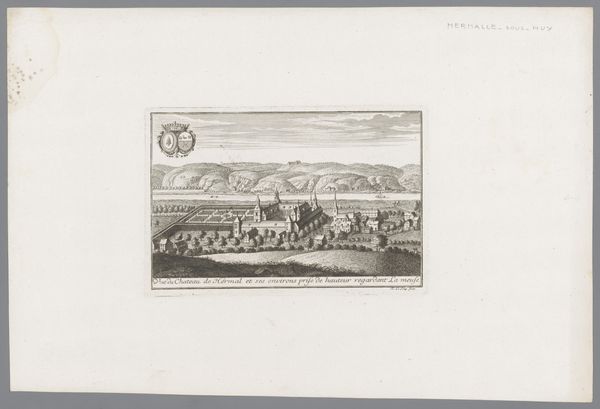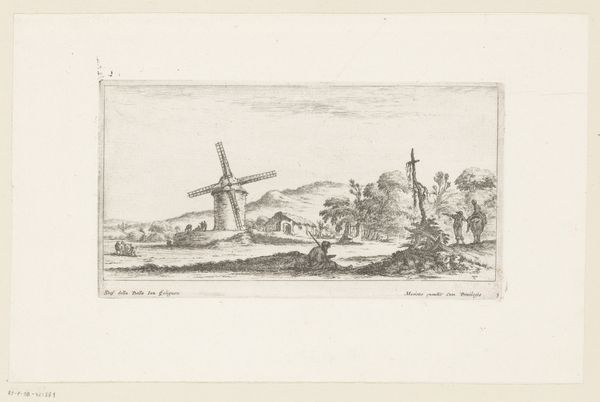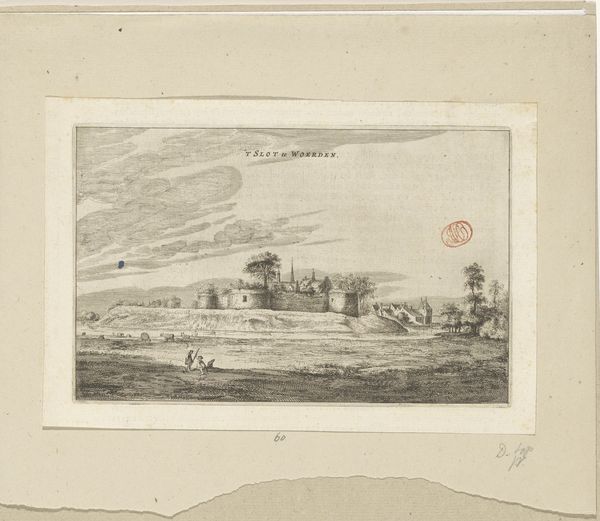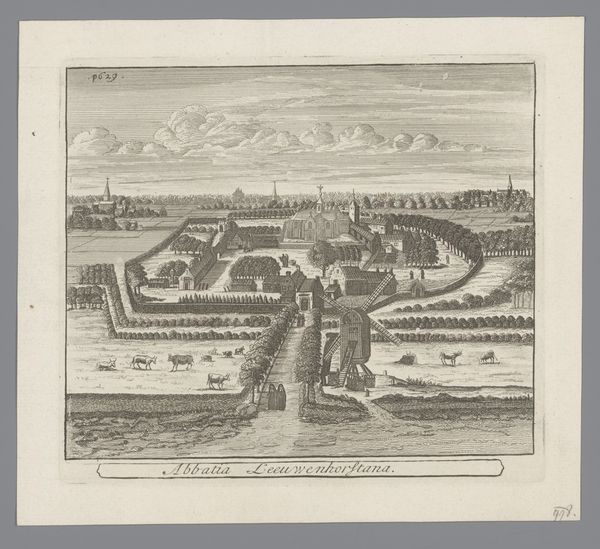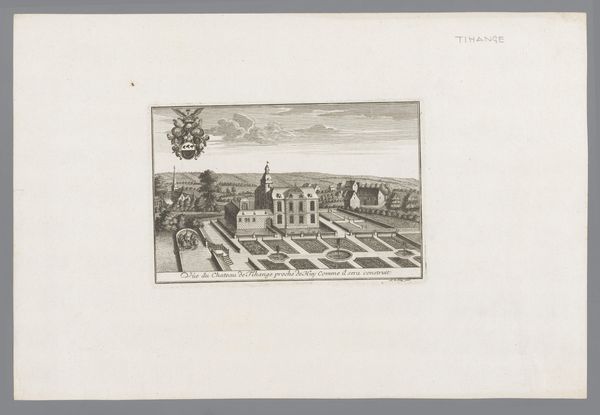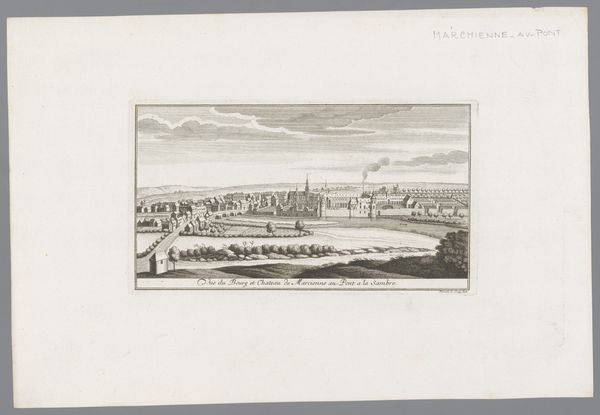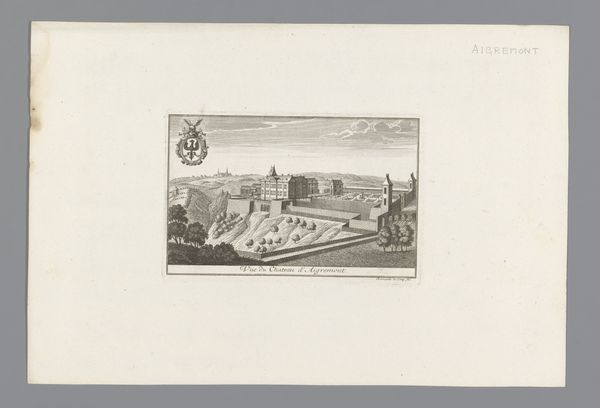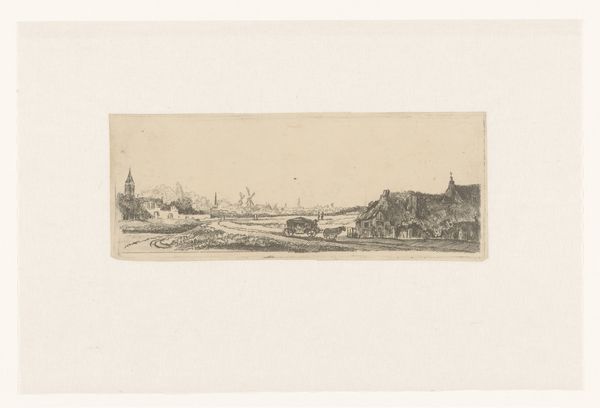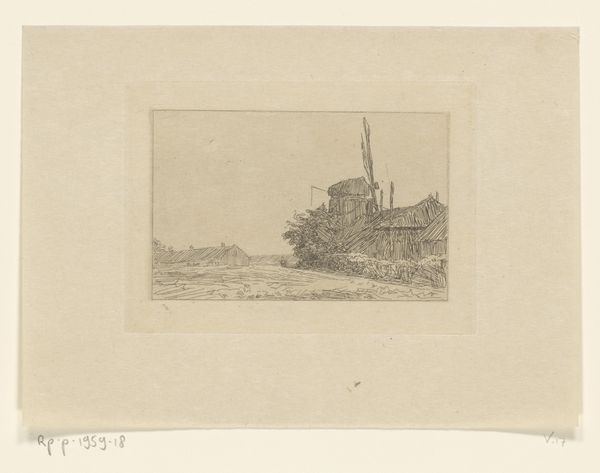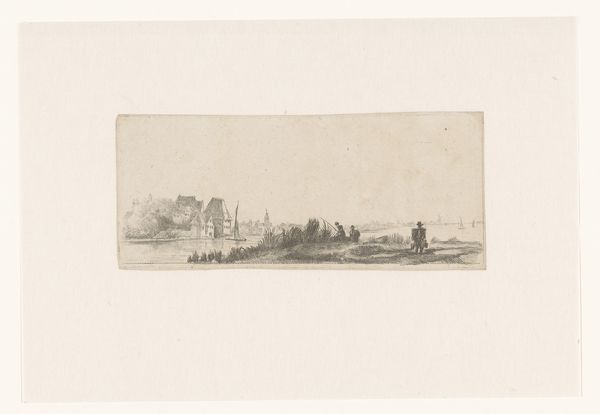
print, engraving
#
baroque
# print
#
landscape
#
cityscape
#
engraving
Dimensions: height 148 mm, width 236 mm
Copyright: Rijks Museum: Open Domain
Curator: This print offers a rather charming 'Gezicht op de Priorij van Oignies', or View of the Priory of Oignies, dating from sometime between 1738 and 1744. Editor: It’s quite serene. The fine lines give it a very structured feel, almost diagrammatic, but with the rolling landscape in the background. You sense a self-contained world here, the priory in quiet authority over the land. Curator: Indeed, the architectural detail, typical of Baroque landscapes, is quite striking when we consider how prints democratized the imagery of power and religion, giving access to the symbols embedded within structures like these to a far broader audience. Note, for instance, the precise delineation of the coat of arms, proudly displayed... Editor: And then look at those rigorously planned fields! This wasn't just an image; it represents real, meticulously organized labor and the assertion of human control over nature, all reproducible through this engraved plate. The material tells that story, doesn't it? Each identical print, spreading a particular view and reinforcing that power dynamic. Curator: Certainly. Beyond the agricultural aspects, the rising spire has obvious symbolic resonance. It’s not merely a representation of a building, it’s an icon announcing a certain worldview. An engraving allowed that iconography to be efficiently reproduced and circulated, reaffirming shared beliefs across physical spaces. Editor: I’m thinking, though, about the labor involved in making the engraving itself, too. Think about the artisan, cutting into the metal, using skill to recreate and disseminate this image. He or she is just as central to this narrative of production. The lines carry meaning. The method is important. Curator: It does reveal a great deal of hidden context when you look at it through that lens. It emphasizes the crucial social processes involved in creating something which would at first seem wholly ideological. Editor: Exactly. It’s never *just* the view; it’s about who made the view possible and why it needed to be shared. I appreciate how this seemingly straightforward print can unpack so much of the historical complexity underneath. Curator: Indeed, considering this piece has allowed me to rethink how iconographic interpretation is invariably influenced by questions of labor and resource.
Comments
No comments
Be the first to comment and join the conversation on the ultimate creative platform.
